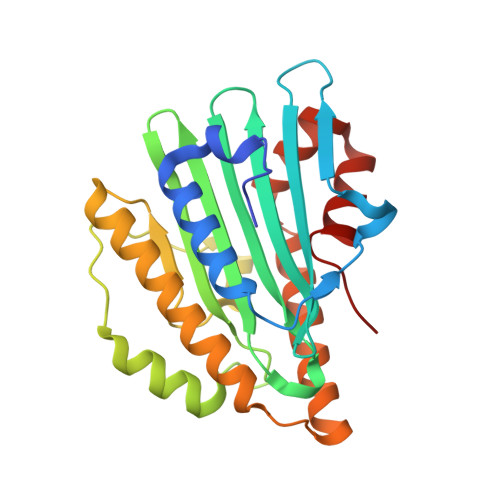Insights into the Proton Transfer Mechanism of a Bilin Reductase PcyA Following Neutron Crystallography.
Unno, M., Ishikawa-Suto, K., Kusaka, K., Tamada, T., Hagiwara, Y., Sugishima, M., Wada, K., Yamada, T., Tomoyori, K., Hosoya, T., Tanaka, I., Niimura, N., Kuroki, R., Inaka, K., Ishihara, M., Fukuyama, K.(2015) J Am Chem Soc 137: 5452-5460
- PubMed: 25872660
- DOI: https://doi.org/10.1021/jacs.5b00645
- Primary Citation of Related Structures:
4QCD - PubMed Abstract:
Phycocyanobilin, a light-harvesting and photoreceptor pigment in higher plants, algae, and cyanobacteria, is synthesized from biliverdin IXα (BV) by phycocyanobilin:ferredoxin oxidoreductase (PcyA) via two steps of two-proton-coupled two-electron reduction. We determined the neutron structure of PcyA from cyanobacteria complexed with BV, revealing the exact location of the hydrogen atoms involved in catalysis. Notably, approximately half of the BV bound to PcyA was BVH(+), a state in which all four pyrrole nitrogen atoms were protonated. The protonation states of BV complemented the protonation of adjacent Asp105. The "axial" water molecule that interacts with the neutral pyrrole nitrogen of the A-ring was identified. His88 Nδ was protonated to form a hydrogen bond with the lactam O atom of the BV A-ring. His88 and His74 were linked by hydrogen bonds via H3O(+). These results imply that Asp105, His88, and the axial water molecule contribute to proton transfer during PcyA catalysis.
- †Frontier Research Center for Applied Atomic Sciences, Ibaraki University, Naka 319-1106, Japan.
Organizational Affiliation:


















